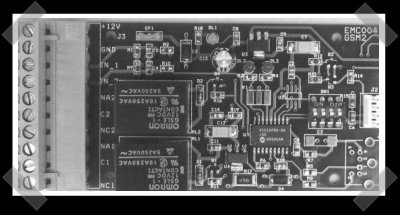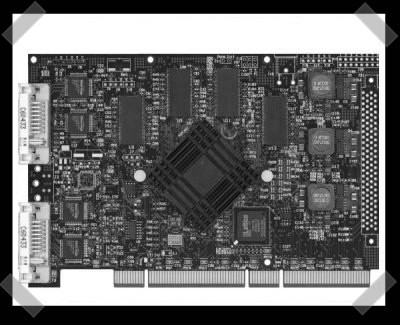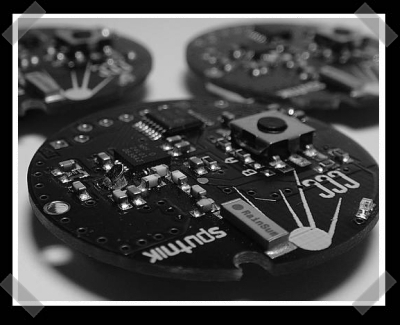
It’s been a while since we’d seen any new SMS/GSM/serial remote interface projects. [Emanuele] sent in his version of a project to do just that. It uses a PIC16F84 and will send or receive commands. A pair of relays provide options for controlling whatever you want to hook it up to. You’ll need a login, but he’s released the full schematics and firmware. He developed this to find uses for old phones, but an alternative is to pick up a cheap calling card cell and dedicate it to a project like this. This seems like a great way to add an out of band alarm system to your house/car/robotic minion.
OpenSource19 Articles
IControlpad, IPhone Gamepad
[CraigX] has been dabbling in iPhone accessories lately by adding a gamepad. Called the iControlpad it surrounds the iPhone making it look very PSP like. As anyone who has jailbroken and installed emulators probably knows, without feedback the touch screen based buttons are less than great.
The unit is currently a prototype however there are plans to produce and sell the units. They have received support from Zodttd, an organization that has created iPhone apps like snes4iphone and genesis4iphone. The developers also state they’ll provide source and SDK support. The sparse development blog announces their success using a hacked up SNES controller over the docks serial connector, but they provide absolutely no details.
[via Engadget]
Open Graphics Card Available For Preorder

The Open Graphics Project has started accepting preorders for their OGD1, a graphics card with a completely open source design. This initial release is billed as a high-end FPGA prototyping kit specifically designed to test computer graphics architectures. The card has two DVI connectors, S-Video, 256MB RAM, and a 64bit PCI-X connector. The core of the system is a Xilinx Spartan-3 XC3S4000 FPGA. A nonvolatile Lattice XP10 FPGA is used to bootstrap the Xilinx at power up. Here’s the layout of the specific components.
An open design like this could prove very beneficial to the free software community. The open hardware makes driver development much easier; binary drivers from traditional graphics manufacturers have been very hard to work with in the past. The OGD1 could also be used with CPU architectures that wouldn’t be unsupported by normal graphics cards. An FPGA based design means that CPU intensive processes like video decoding could be offloaded to the video card without needing a dedicated chip. There is still a lot of work to be done and at $1500 we’re pretty sure most of you won’t be buying the first generation. It’s still exciting to see traditional PC hardware getting reinvented and opened up. Check out the OGD1’s FAQ for more info.
Swarm Robotics

Uber-geek [James McLurkin] was in Austin recently demoing his robot swarm. He’s on tour with EDA Tech Forum. [McLurkin] has multiple degrees from the MIT AI lab and worked at iRobot for a couple of years. Lately, he has been working on distributed robot computing: robot swarms.
[McLurkin] was an entertaining speaker and had an interesting view of robotics. He is optimistic that robot parts will become more modular, so it will be easier to build them, and more importantly, faster to design them.
Some quotes:
- “There’s more sensors in a cockroach’s butt than any robot”
- “12 engineer years to design, 45 minutes to build”
- “If it can break your ankle, it’s a real [rc] car.”
OpenBeacon: Active RFID Platform

The OpenBeacon project is an open source hardware and software active RFID device. OpenBeacon tags consist of 2.4GHz transceivers and a PIC16F684. One use of the project was to create CCC Sputnik to show the downsides to information culled using data mining from large tracking systems. People who chose to participate and wear the Sputnik tags did so voluntarily to create a database of material for further study. The hardware schematics (PDF) for the first version tags as well as the firmware for all versions has been released. Further creative uses of the OpenBeacon project are strongly encouraged.
As a reminder, the 24C3, the 24th Chaos Communication Congress, call for participation ends on October 12th. The theme this year encompasses all hardware projects and more specifically, steampunk themed submissions. Check out the CCC events blog for more information.











